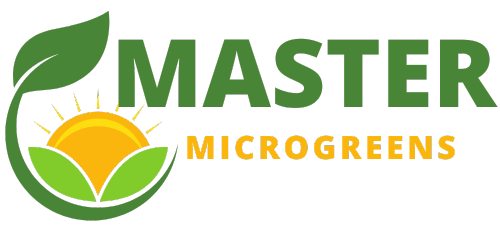Are you looking for a way to profit from your passion for farming? If so, microgreens could be the perfect product! Selling your homegrown microgreens to local grocery stores can be an excellent business opportunity. But how do you make it happen? In this article, we’ll give you all of the information and tips that you need to know in order to successfully sell microgreens to supermarkets. From choosing the right varieties of greens to creating effective marketing strategies, we’ve got everything covered. So if you’re ready to take advantage of this lucrative industry, let’s get started!
The demand for locally-grown produce has been on the rise over the past decade. And with more consumers wanting fresh, organic options at their fingertips, selling microgreens is quickly becoming a popular business venture among farmers. Not only are these tiny sprouts high in essential vitamins and minerals but they also offer a unique flavor profile that sets them apart from other vegetables. Plus, they require minimal space or resources – making them ideal for small-scale growers who want to break into the market without investing too much money upfront.
But before you start harvesting and packaging your own crop of microgreens, there are certain steps that must be taken in order to ensure success. In this guide, we’ll cover everything from selecting the best seeds and soils for growing microgreens to approaching potential customers like grocery stores and restaurants about stocking your product. We’ll even discuss creative ways of advertising your goods so that you can maximize profits while building brand recognition in your community. Let’s dive in!
What You'll Learn
Selling Microgreens To Grocery Stores
Selling microgreens to grocery stores can be a lucrative business venture. Not only do they offer numerous benefits, but it is also a sustainable way to provide fresh produce for consumers. Microgreens are not only rich in nutrients and flavor, but they also require limited space and time to cultivate and harvest.
The benefits of selling microgreens to grocery stores include providing customers with an array of nutrient-rich food options that contain essential vitamins, minerals, and antioxidants. Additionally, the small size of these greens means that there is less risk for spoilage compared to larger vegetables such as kale or spinach. This makes them ideal for those who may not have access to large amounts of fresh produce on a regular basis. Moreover, since microgreens can be grown year-round indoors or outdoors without requiring much land, this makes them more cost effective than traditional farming methods.
Finally, by selling microgreens to grocery stores you are helping support local farmers while contributing to environmental sustainability efforts. Since the growing process doesn’t rely heavily on synthetic fertilizers or pesticides, there is little impact on the environment when cultivating these plants. Furthermore, the lack of transportation requirements associated with shipping ensures minimal emissions from transporting goods long distances – making it easier for everyone involved to practice responsible consumption habits.
With all these advantages in mind, selling microgreens at grocery stores could potentially become a profitable venture while promoting healthy eating practices among consumers. Next up we’ll discuss how to effectively cultivate and harvest microgreens so you can start your own farm with ease!
How To Cultivate And Harvest Microgreens
Microgreens are an increasingly popular type of produce, and they require special care when cultivating. The soil requirements must be carefully considered to ensure optimal growth; a combination of peat moss and compost is ideal for most microgreen varieties. Additionally, the pH balance needs to be monitored regularly throughout the cultivation process. Watering techniques should also be tailored to each individual variety as some need more water than others.
When selecting seeds for your microgreen crop, it’s important to take into account the growing season in your region. Some types of microgreens will only grow during certain times of year while other varieties may do better with different climates or temperatures. You can purchase pre-packaged seed mixes or opt for specific varieties that you know will thrive in your area.
The harvesting process for microgreens requires patience and attention to detail. Once the plants have grown to their desired size, cut them at the base with scissors or a sharp knife. Be sure not to damage any remaining stems or leaves as this could decrease their shelf life after harvest. Packaging and shipping requirements should then be taken into consideration before sending out the harvested crops.
Packaging And Shipping Requirements
When it comes to selling microgreens to grocery stores, proper packaging and shipping requirements are key. To ensure that the process is done efficiently, there are a few steps you should take. First of all, make sure your packaging stands out from the competition. You want to grab customers’ attention with attractive colors and eye-catching designs. Additionally, choose a container that will keep your greens fresh for as long as possible so they arrive in peak condition at their destination.
Next, consider how much time and money you can dedicate to shipping costs. Investing in a reliable delivery service can help minimize any losses due to delays or spoiled goods on arrival. Furthermore, research which carriers offer discounts or other incentives when transporting large orders of microgreens. By taking advantage of these offers, you could save some money while ensuring prompt deliveries every time.
All in all, having an effective plan for packaging and shipping requirements is essential when selling microgreens to grocery stores. With this guide laying out the basics, you’re ready to move onto negotiating with store buyers – let’s dive into that now!
Negotiating With Grocery Store Buyers
Now that you understand the packaging and shipping requirements for selling microgreens to grocery stores, it’s time to start negotiating with buyers. Here are some tips to keep in mind when talking with potential grocery store buyers:
- Know your product inside out – Understand what makes your microgreens stand out from competitors and be prepared to explain why they’re a valuable addition to the store.
- Research the market – Gather data about pricing and competition in the area so you can make an informed decision on how much to charge per unit.
- Be flexible – Negotiating is all about compromise, so try to find common ground between both parties by offering discounts or other incentives if needed.
- Stay organized – Keep track of who you spoke with at each store as well as any agreements made during negotiations so there’s no confusion down the line.
By understanding these key points, you’ll be better equipped to establish yourself as a reliable vendor within the industry and set yourself up for success. Now that we’ve discussed negotiation techniques, let’s explore some tips for building a sustainable business model.
Tips For Building A Sustainable Business Model
Think of your sustainable business model as a garden. Planting the right seeds in the right soil with the right nutrients and attention is key to harvesting a bountiful crop. Selling microgreens to grocery stores requires careful planning, nurturing, and continual maintenance if you want to reap long-term rewards.
| Microgreens Sustainability | Ecological Farming | Organic Growth |
|---|---|---|
| Building relationships | Minimizing water usage | Fostering connections |
| Supporting local farmers | Growing nutrient rich soil | Developing customer loyalty |
| Utilizing renewable resources | Limiting chemical & pesticide use | Diversifying marketing strategies |
To create an effective strategy for selling microgreens to grocery stores, consider these components of sustainability. Building relationships with suppliers and developing customer loyalty can help increase organic growth over time. Furthermore, supporting local farmers who practice ecological farming by utilizing renewable resources while minimizing water usage and limiting chemicals and pesticides will ensure that your microgreen business is both successful and environmentally responsible. Finally, diversifying marketing strategies gives you more options for connecting with potential customers so that you can maximize profits without sacrificing quality standards or ethical values.
Conclusion
It’s time to take your microgreens business to the next level! Selling your produce in grocery stores can be a daunting task, but with these tips you’ll be well on your way. Cultivating and harvesting high quality microgreens is key; then it’s all about proper packaging, shipping, and negotiating with buyers. Once you’ve established a solid foundation for success by creating a sustainable business model, there’s no limit to what you can accomplish!
With hard work, dedication, and an eye for detail, selling microgreens at grocery stores will become second nature. You’ll find yourself quickly mastering every step of the process – from cultivating the perfect crop of greens to expertly packing them up for shipment. Before long, you won’t just be selling microgreens -you’ll be excelling at it!
So don’t let any hesitation or doubt keep you from succeeding in this field. If you put in the effort and stick with it, you’ll soon have customers flocking to your store shelves faster than ever before. With some practice and perseverance, selling microgreens to grocery stores will become easier than ever – so get out there and start making history today!





